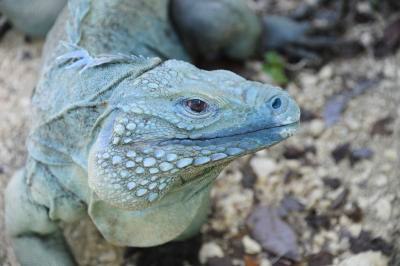 Score another success for species conservation. The Grand Cayman blue iguana now has a chance for complete recovery, even though the wild population numbered less than two dozen 8 years ago.
Score another success for species conservation. The Grand Cayman blue iguana now has a chance for complete recovery, even though the wild population numbered less than two dozen 8 years ago.
The Blue Iguana Recovery Program announced yesterday that 500 captive-bred reptiles have successfully been released since 2002.
The Grand Cayman blue iguana is the largest native species of its namesake island, growing to more than 5 feet in length and sometimes weighing more than 25 pounds.
Coordinated by the National Trust for the Cayman Islands, the program’s consortium of local and international partners, including the Wildlife Conservation Society’s Bronx Zoo, expects to reach its goal of 1,000 iguanas in managed protected areas in the wild within a few years. After that, they will monitor the iguanas to make sure they are reproducing in the numbers needed to maintain the wild population.
“For the past several years, we’ve succeeded in adding hundreds of animals to the wild population, all of which receive a health screening before release,” said Dr. Paul Calle, Director of Zoological Health for WCS’s Bronx Zoo.
Recovery efforts to save the Grand Cayman blue iguana have mostly centered on the Salina Reserve, a 625-acre nature reserve located on the eastern side of the island. This year, the recovery program is releasing iguanas — which are hatched and raised for a year or two in a captive breeding facility — into a new protected area, the Colliers Wilderness Reserve, established last year and managed by the National Trust.



















